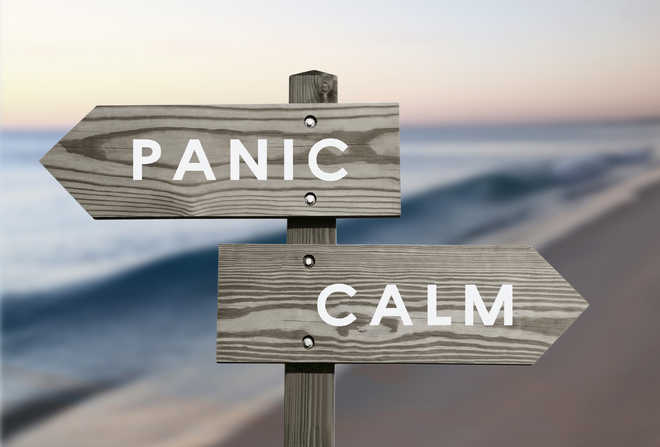Dr Satish K Kapoor
Krodha or anger, is one of the five primary emotions; others being fear, worry, sadness and joy. It mirrors the lower instinctive consciousness, and stems from rajas guna, quality of passion in the embodied self. It is one of shadripu, six enemies, of the mind that bind the soul to the material world. Krodha is identified with the element of fire that provides glow to life, but may harm, if it is out of balance. The Bhagavadgita (II. 63) says: Krodhad bhavati sammohah/ Sammohat smriti-vibhramah. Smriti-bhranshad buddhi-nash/ Buddhi-nashat pranashyati. ‘From anger arises delusion, from delusion comes memory-loss, from loss of memory, the intellect is destroyed; when the intellect is destroyed one is ruined.’
What triggers anger?
Anger is triggered by fear, failure, loss, threat, injustice, insult, assault, cheating, bullying, an unhealthy relationship, a nasty experience, or an adverse life-situation. Sometime, it is a distraction from what one feels deep down. Yet, anger is not caused by people or events but by one’s reaction to them. An angry person loses control over himself — his voice is raised, face turns red, pupils dilate, teeth grind, nostrils flare, fists clench, limbs shake, heart beats faster and so on. He may abuse, break things, threat, and harm himself or others.
Opening the mind’s eye
Anger can be managed by self awareness, self control and cultivation of virtues like love, kindness, patience, humility and forgiveness. The heart should be broadened by connecting with the spirit within, which envelopes all. This would open the mind’s eye and make one think clearly, reasonably and compassionately. Recognizing that each person reacts differently in the same situation, one can circumvent impulsive reactions, and develop better understanding. A word of apology or a gesture of conciliation sometime helps to clear tense atmosphere. Even when anger is justified, an exaggerated response may prove to be harmful.
Rhythmic breathing
Pranayama restores the rhythm of breathing which becomes upset by fits of rage. Regular practice of Bhramari pranayama — humming bee-breath, nadi shodhana pranayama — alternate nostril breathing, and Chandrabhedi pranayama — left nostril breathing, increase one’s ability to deal with complex situations, and restrain flare-ups of negative energy. There are many ways to control temper tantrums like, deep breathing; pausing ten seconds after each exhalation; inhaling through the nose and exhaling through the mouth; focusing on the sound of breath; keeping count of inhalations and exhalations; repeating sacred syllables or a peace invocation (like om shantih) mentally; drinking cold water, observing mauna, silence, moving away from the situation and so on.
How meditation helps
Dhyana or meditation quiets the emotions and the mind and elevates consciousness. It activates the ‘dorsomedial prefrontal cortex of the brain’, making one more balanced and compassionate (Rebecca gladding, You Are Not Your Brain). Research shows that mindfulness - ‘a moment to moment non-judgmental awareness’ - helps to monitor feelings and thoughts so that one can stay positive. Neuroscientists prove that mindfulness reduces activity in anxiety-related areas like the insular cortex and the amygdale (Scientific American, summer 2017), thus restraining emotional and physiological triggers to anger. Loving-kindness (Metta) meditation in which one employs mantra-s to send out vibrations of love and compassion towards all, including one’s enemies, eliminates anger.
Nature nurture
Communion with nature, physical exercise, sattvic diet, rhythmic sounds, soulful music, dance, and an appropriate use of colours (blues and greens), gems (like rose quartz, amethyst and carnelian) and herbs (like brahmi, shankhapushpi and vacha) relax the mind and the central nervous system, enabling one to maintain equipoise. Cognitive behavioural therapy (CBT) combined with a spiritual way of life, can develop immunity to irritants in daily life, and surmount the drives of ‘negative emotional brain circuits.
(Dr Kapoor is a noted educationist, historian and spiritualist)
Unlock Exclusive Insights with The Tribune Premium
Take your experience further with Premium access.
Thought-provoking Opinions, Expert Analysis, In-depth Insights and other Member Only Benefits
Already a Member? Sign In Now










